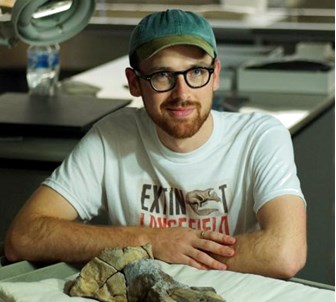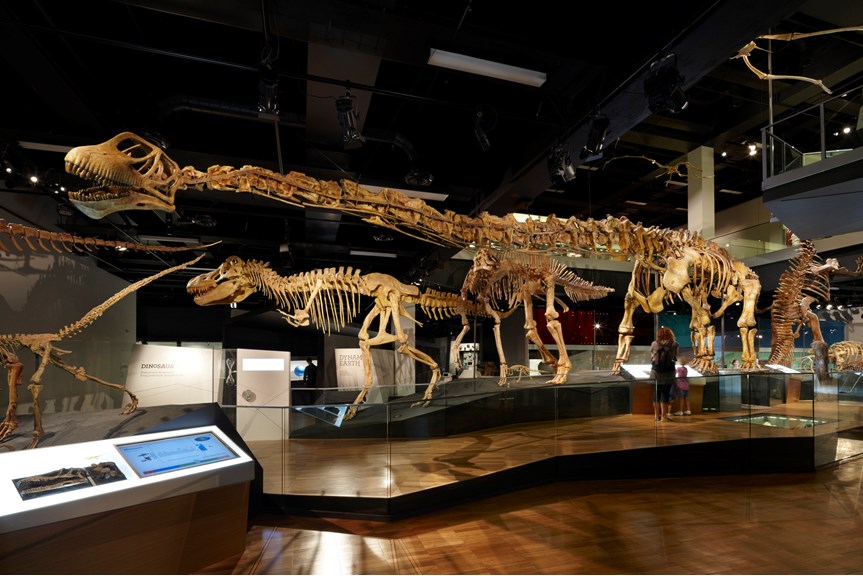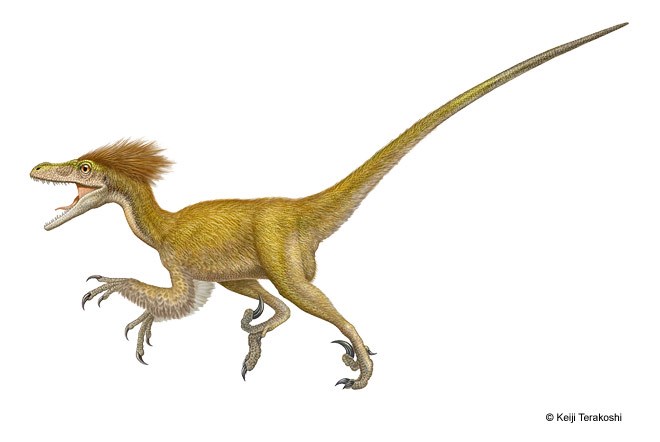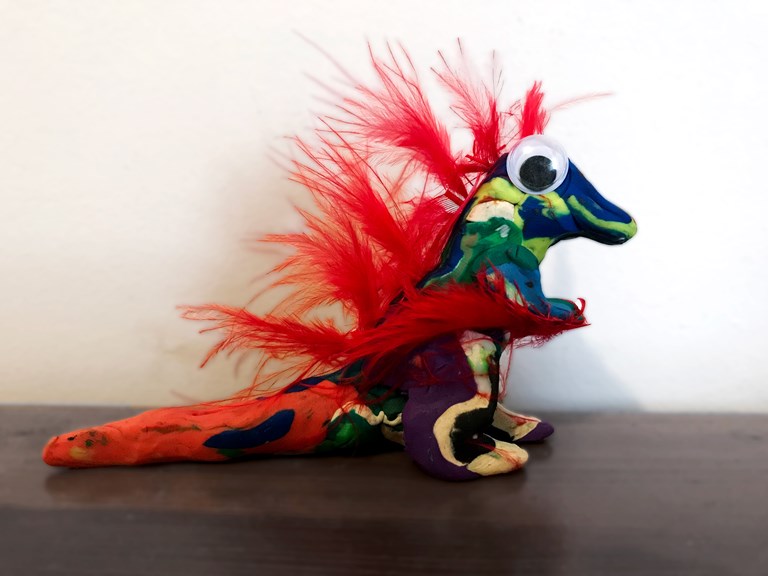Dinosaurs and fossils
Suitable for Year Levels K–6
Activity 1
What is a Palaeontologist?
Suitable for Year Levels F-6
Listen to The Fact Detectives podcast with Museums Victoria’s Tim Ziegler to learn all about what a palaeontologist does and why their work is so important.
In this podcast Tim and The Fact Detectives discuss:
- What fossils are and how they are found
- How fossils can teach us about past
- Why we keep fossils in museums
- What Tim’s favourite fossil at Melbourne Museum is!
Activity 2
Virtual tour of Dinosaur Walk at Melbourne Museum
Suitable for Year Levels 3-6
Come and visit the amazing dinosaurs and other prehistoric creatures at Melbourne Museum by taking a virtual tour of Dinosaur Walk. Explore the gallery by clicking the arrows on the ground to move forward. You can also click and drag your mouse to look to the sides, up, and down.
As you are exploring the gallery see if you can answer to the following questions:
- How many dinosaurs (or prehistoric creatures) can you count in the exhibition?
- Can you find the Tarbosaurus? Clue: It looks like a small T. rex
- Can you find the Mamenchisaurus? Clue: It has a loooooong neck
- Which dinosaur do you think is the most interesting to look at?
- Write a list of all the different dinosaurs that you know.
Learn more about the dinosaurs on display at Melbourne Museum, including how big they were, what they ate, and when they roamed the Earth
Activity 3
Dinosaurs lay eggs! Who else lays eggs?
Suitable for Year Levels 3–4
Did you know that dinosaurs lay eggs? Watch this short video with one of our palaeontologists, taken from a virtual learning session we ran last year to learn about some special dinosaur egg fossils that we have at Melbourne Museum:
Did dinosaurs lay eggs?
In the video, you learned some interesting facts about dinosaur eggs, other animal eggs were mentioned too. This next activity gives you an opportunity to consider how different animals reproduce and for you to have a go at sorting and classifying.
Download and complete the Who Lays Eggs? activity sheet
Activity 4
Dinosaur Fun! Making a feathered dinosaur
Suitable for Year Levels K–6
The way that palaeontologists think about dinosaurs has changed in recent years.
Once upon a time palaeontologists thought that all dinosaurs were covered in scales or scutes, just like modern day reptiles. We now know that some dinosaurs were covered in feathers!
Palaeontologists think Deinonychus had feathers, but nobody is sure what colour they were. There is a Deinonychus skeleton on display in the Dinosaur Walk exhibition which you can learn more about at the website below.
For this next activity we want you to use your imagination to design your very own feathered dinosaur! You get choose what your dinosaur will look like, and what sort of feathers it will have. You might like to base your dinosaur on one of the ones we have at Melbourne Museum, or create a brand-new type of dinosaur.
What you need
Option 1
- Feathers
- Pencils or textas
- Glue
- A printer and paper
Download and print this fact sheet of Deinonychus, colour it in and glue on some feathers:
Option 2
- Play-dough, plasticine, or clay
- Feathers
Make a model of Deinonychus out of play-dough, plasticine, or clay and attach some feathers.
Your questions answered
Victorian Curriculum
Biological sciences
Levels F–2
- Living things have a variety of external features and live in different places where their basic needs, including food, water and shelter, are met (VCSSU042)
Levels 3–4
-
Living things can be grouped on the basis of observable features and can be distinguished from non-living things (VCSSU057)
-
Different living things have different life cycles and depend on each other and the environment to survive (VCSSU058)
Levels 5–6
-
Living things have structural features and adaptations that help them to survive in their environment (VCSSU074)
-
The growth and survival of living things are affected by the physical conditions of their environment (VCSSU075)
Victorian Early Years Learning and Development Framework
| Outcome | Evidence Marker |
|---|---|
| Children have a strong sense of identity. | Children develop their emerging autonomy, inter-dependence, resilience and sense of agency |
| Children are connected with, and contribute to, their world. | Children become socially responsible and show respect for the environment |
| Children are effective communicators. | Children express ideas and make meaning using a range of media |
| Children are confident and involved learners. | Children develop dispositions for learning such as curiosity, cooperation, confidence, creativity, commitment enthusiasm, persistence, imagination and reflexivity |
| Children are confident and involved learners. | Children develop a range of skills and processes such as problem solving, inquiry, experimentation, hypothesising, researching and investigating. |
|
Children are confident and involved learners. |
Children transfer and adapt what they have learnt from one context to another |



